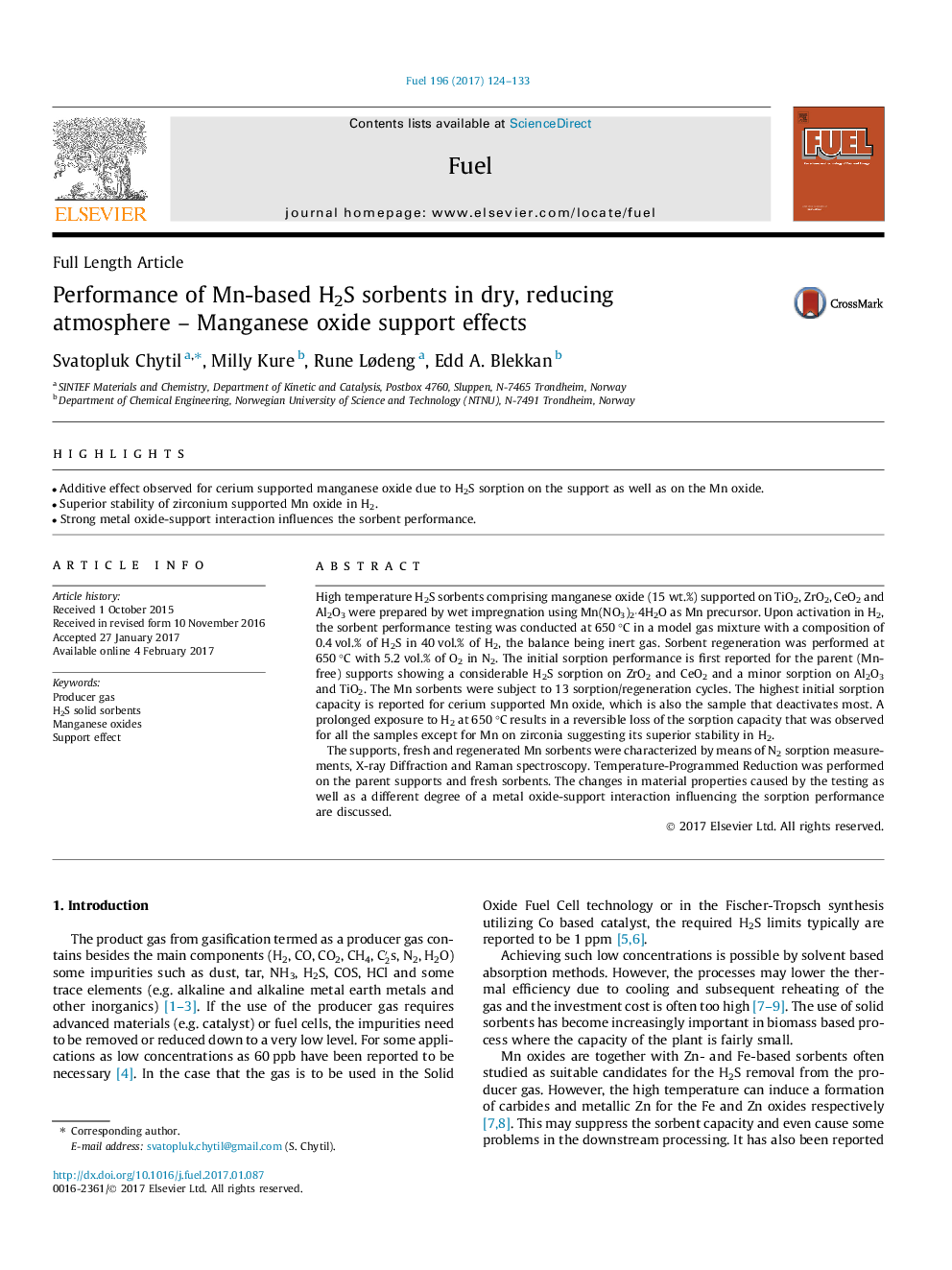| Article ID | Journal | Published Year | Pages | File Type |
|---|---|---|---|---|
| 6475008 | Fuel | 2017 | 10 Pages |
â¢Additive effect observed for cerium supported manganese oxide due to H2S sorption on the support as well as on the Mn oxide.â¢Superior stability of zirconium supported Mn oxide in H2.â¢Strong metal oxide-support interaction influences the sorbent performance.
High temperature H2S sorbents comprising manganese oxide (15 wt.%) supported on TiO2, ZrO2, CeO2 and Al2O3 were prepared by wet impregnation using Mn(NO3)2·4H2O as Mn precursor. Upon activation in H2, the sorbent performance testing was conducted at 650 °C in a model gas mixture with a composition of 0.4 vol.% of H2S in 40 vol.% of H2, the balance being inert gas. Sorbent regeneration was performed at 650 °C with 5.2 vol.% of O2 in N2. The initial sorption performance is first reported for the parent (Mn-free) supports showing a considerable H2S sorption on ZrO2 and CeO2 and a minor sorption on Al2O3 and TiO2. The Mn sorbents were subject to 13 sorption/regeneration cycles. The highest initial sorption capacity is reported for cerium supported Mn oxide, which is also the sample that deactivates most. A prolonged exposure to H2 at 650 °C results in a reversible loss of the sorption capacity that was observed for all the samples except for Mn on zirconia suggesting its superior stability in H2.The supports, fresh and regenerated Mn sorbents were characterized by means of N2 sorption measurements, X-ray Diffraction and Raman spectroscopy. Temperature-Programmed Reduction was performed on the parent supports and fresh sorbents. The changes in material properties caused by the testing as well as a different degree of a metal oxide-support interaction influencing the sorption performance are discussed.
